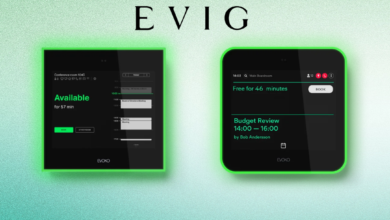The Allure of Grotesque Fonts: From Industrial Origins to Digital Versatility

Grotesque fonts, often referred to as grotesque sans-serifs, have played a vital role in shaping the typographic landscape since the early 19th century. Emerging as some of the earliest sans-serif typefaces, grotesques were initially considered unusual or even unsightly—hence the name “grotesque.” These early designs were defined by their mechanical, utilitarian look, often characterized by irregular stroke widths, tight apertures, and idiosyncratic shapes that gave them a uniquely industrial and somewhat raw aesthetic. They were a departure from the highly ornamental serif typefaces that had previously dominated print, reflecting a new, modern era of mechanization and utility.
From Neo-Grotesque to Modern Design Tools
Over time, grotesque fonts evolved into several subcategories, most notably the neo-grotesques of the mid-20th century. These refined successors, such as Helvetica and Akzidenz-Grotesk, offered a cleaner, more neutral appearance, making them suitable for a wide range of design applications—from corporate branding to editorial layouts. While early grotesques retained a degree of visual awkwardness, neo-grotesques embraced uniformity, balance, and clarity, helping them become some of the most widely used fonts in history. Their minimalist forms and legibility made them fundamental to Swiss design and the International Typographic Style.
The TypeType Approach to Grotesques
The digital age has seen a resurgence in the popularity of grotesque fonts, with modern foundries expanding and reimagining these timeless designs. TypeType, a contemporary font foundry, has developed a comprehensive collection of grotesque fonts that highlight the genre’s versatility and enduring appeal. According to their official website, the TypeType grotesque catalog spans a wide range of styles—from ultra-thin neoclassical designs to bold, geometric display fonts—designed to function effectively across multiple contexts including branding, editorial design, packaging, and user interfaces. TypeType emphasizes high readability and adaptability, ensuring their grotesques perform equally well in print and on digital screens.
See also: How to Protect Yourself From Misuse of AI Face Swap Technology
Leading TypeType Grotesques
Among the standout grotesque fonts in the TypeType collection are TT Norms® Pro and TT Commons™ Pro. TT Norms® Pro, a neo-grotesque workhorse, is noted for its neutral, geometric structure and extensive language support, making it an ideal choice for global brands. It is used by major companies such as Cartoon Network, highlighting its utility in both corporate and creative settings. TT Commons™ Pro, another flagship release, provides a similar level of clarity and functional design, serving as a reliable typographic foundation for identity systems, websites, and print collateral. These fonts are designed with consistency and flexibility in mind, offering numerous weights, stylistic sets, and OpenType features that allow designers to fine-tune their visual messaging.
Expressive and Specialized Styles
TypeType also offers expressive grotesque styles that lean into personality and uniqueness. TT Hoves Pro, for instance, emphasizes geometric harmony and is suitable for clean, minimalist compositions. Fonts like TT Rounds Neue and TT Travels Next introduce rounded terminals and quirky design features, catering to projects that require a more approachable or energetic tone. TT Frantz, another in the grotesque family, is tailored for modern display use with a bold and assertive character. These designs show how grotesques can be both technically sound and creatively compelling.
Why Designers Still Choose Grotesque Fonts
Grotesque typefaces continue to be favored by designers not only for their visual neutrality but also for their adaptability across design genres. Their clean lines and structural simplicity make them ideal for conveying professionalism, while more playful variations can evoke warmth or modernity. TypeType’s grotesque fonts are built with modern needs in mind, offering legibility at small sizes, smooth rendering across platforms, and multilingual support—essential traits for contemporary branding and UI work. Their active development and wide range of licensing options also make them accessible and practical for design teams of all sizes.
Conclusion
So, grotesque fonts have transcended their industrial origins to become mainstays in global design. From print to screen, from minimalist brands to expressive campaigns, their ability to communicate clearly and stylishly is unmatched. TypeType’s curated grotesque collection serves as a testament to the style’s evolution, offering designers a wide palette of options to meet both aesthetic and functional demands.





